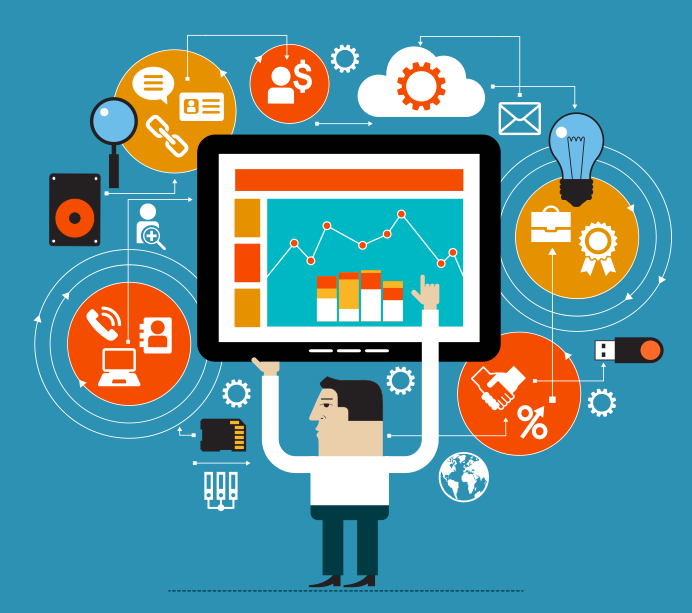In today’s fast-paced digital landscape, marketing automation has become an essential tool for businesses of all sizes. Whether you’re a small startup or a large corporation, understanding marketing automation can significantly enhance your marketing efforts and drive better results. In this ultimate guide, we’ll explore the basics of marketing automation, its benefits, key components, and best practices to help beginners get started.
What is Marketing Automation?
Marketing automation refers to the use of software platforms and technologies designed to automate repetitive marketing tasks. These tasks include email marketing, social media posting, ad campaigns, lead generation, and more. By automating these processes, businesses can save time, reduce human error, and create more targeted marketing campaigns that engage their audience effectively.
Key Features of Marketing Automation Tools
- Email Marketing Automation: Automate your email campaigns to send personalized messages based on user behavior, demographics, and preferences. This includes welcome emails, follow-up sequences, and re-engagement campaigns.
- Lead Scoring and Management: Automatically score leads based on their interactions with your content, helping you identify high-quality prospects and prioritize your outreach efforts.
- Social Media Automation: Schedule and publish posts across various social media platforms, allowing you to maintain a consistent online presence without the need for constant manual updates.
- Analytics and Reporting: Gain insights into your marketing performance through automated reporting tools. Track key metrics, analyze data, and make informed decisions to optimize your strategies.
- Customer Segmentation: Use automated tools to segment your audience based on behavior, preferences, or demographics. This enables you to tailor your messaging and offers to specific groups.
Benefits of Marketing Automation
Increased Efficiency
One of the most significant advantages of marketing automation is increased efficiency. By automating repetitive tasks, your marketing team can focus on strategic planning and creative initiatives rather than mundane activities. This leads to faster execution and better resource allocation.
Improved Lead Nurturing
Marketing automation allows businesses to nurture leads throughout the buyer’s journey. By sending targeted messages at the right time, you can engage potential customers and guide them towards making a purchase. This personalized approach enhances the likelihood of conversion.
Better Customer Insights
With marketing automation, you can gather valuable data on your audience’s behavior and preferences. This information helps you understand what works and what doesn’t, enabling you to refine your strategies and improve your overall marketing effectiveness.
Enhanced ROI
Investing in marketing automation can yield a high return on investment (ROI). By streamlining processes, improving lead conversion rates, and delivering personalized experiences, businesses can increase sales and revenue without proportionally increasing marketing costs.
Consistent Messaging
Automated marketing tools ensure that your messaging is consistent across all channels. Whether a potential customer interacts with your website, receives an email, or engages on social media, they experience a cohesive brand message.
Getting Started with Marketing Automation
Define Your Goals
Before diving into marketing automation, it’s crucial to define your goals. What do you want to achieve? Whether it’s generating more leads, increasing customer retention, or boosting sales, having clear objectives will guide your automation efforts.
Choose the Right Marketing Automation Platform
There are numerous marketing automation tools available, each with its unique features and pricing models. Some popular options include:
- HubSpot: Offers a comprehensive suite of tools for inbound marketing, including email marketing, lead management, and analytics.
- Mailchimp: Known for its user-friendly interface, Mailchimp is excellent for email marketing automation and basic customer segmentation.
- ActiveCampaign: Focuses on email marketing automation, CRM, and customer experience automation.
- Marketo: A robust platform designed for larger enterprises, offering advanced automation features and analytics.
Evaluate your business needs and budget to select the platform that best aligns with your goals.
Create Targeted Content
Content is at the heart of effective marketing automation. Develop high-quality, relevant content that addresses your audience’s pain points and interests. This includes blog posts, eBooks, videos, and webinars. Tailor your content to different buyer personas to enhance engagement.
Set Up Automation Workflows
Once you have your content ready, it’s time to create automation workflows. This involves setting up sequences that determine how and when your audience receives your messages based on their actions. For example:
- Welcome Series: Automatically send a series of welcome emails to new subscribers.
- Lead Nurturing Campaign: Develop a workflow that sends targeted content based on lead behavior, such as website visits or content downloads.
- Abandoned Cart Emails: Automatically remind customers who have left items in their cart to complete their purchase.
Monitor and Optimize
After launching your automation campaigns, it’s essential to monitor their performance. Use the analytics tools provided by your marketing automation platform to track key metrics, such as open rates, click-through rates, and conversion rates. Analyze this data to identify areas for improvement and optimize your workflows accordingly.
Best Practices for Marketing Automation
- Start Small: If you’re new to marketing automation, begin with a few simple automation tasks, such as email campaigns or social media scheduling. Gradually expand your automation efforts as you become more comfortable.
- Personalize Your Messaging: Leverage the data you collect to personalize your communications. Use the recipient’s name, tailor content based on their interests, and segment your audience for more targeted outreach.
- Test and Experiment: Regularly test different subject lines, content formats, and send times to determine what resonates best with your audience. A/B testing can provide valuable insights into improving your campaigns.
- Stay Compliant: Ensure that your marketing automation practices comply with regulations, such as GDPR and CAN-SPAM. Always obtain consent for email marketing and provide an easy opt-out option.
- Continuous Learning: Marketing automation is an ever-evolving field. Stay updated with the latest trends, tools, and best practices by following industry blogs, attending webinars, and participating in relevant training sessions.
Conclusion
Marketing automation is a powerful tool that can transform your marketing efforts and drive business growth. By automating repetitive tasks, nurturing leads, and delivering personalized content, you can enhance your marketing strategy and achieve better results. As a beginner, take the time to understand the fundamentals, choose the right platform, and implement best practices to make the most of your marketing automation journey. Start small, monitor your progress, and continuously optimize your approach for sustained success.






More Stories
Sexy Lahore Call Girls at cheap rate
Change Name on Companies House:xactaccountant
Walk In Coolers | Essential Cooling